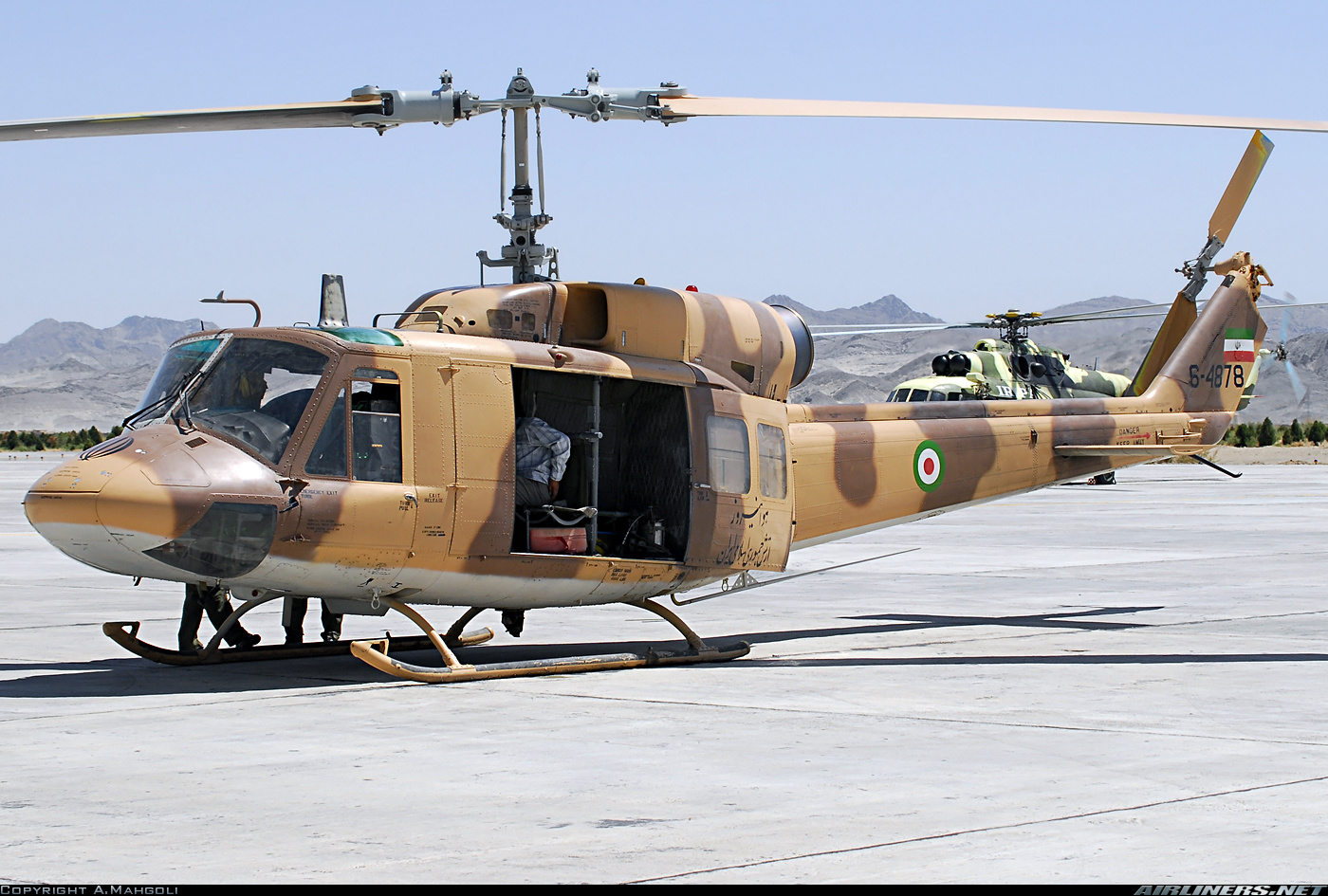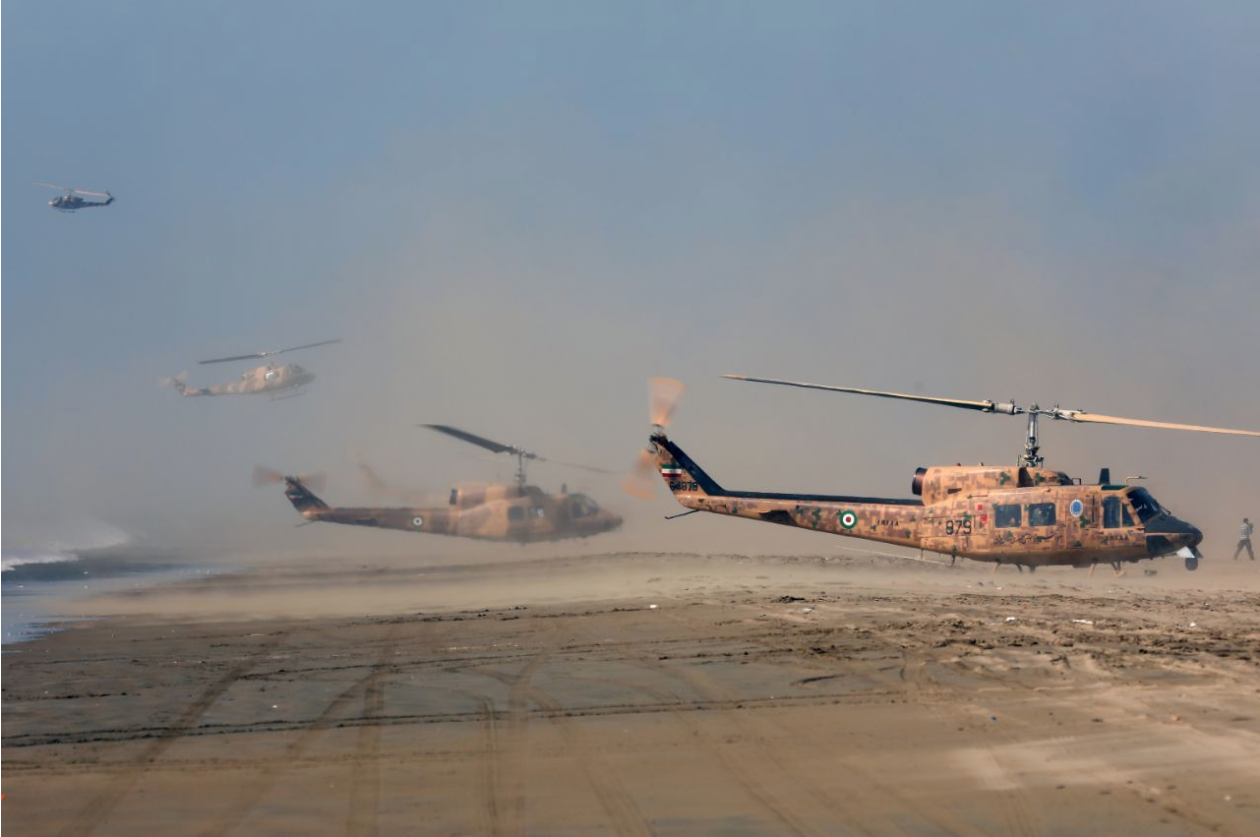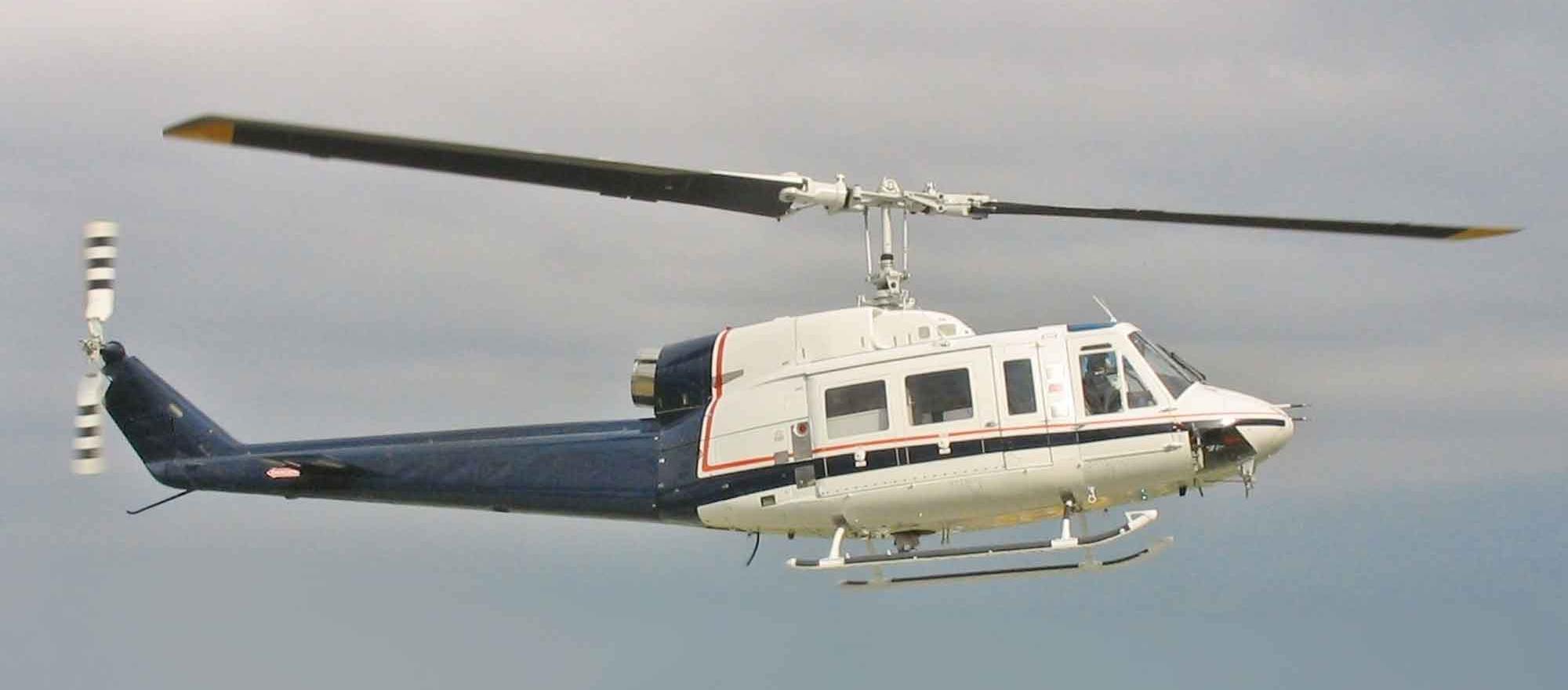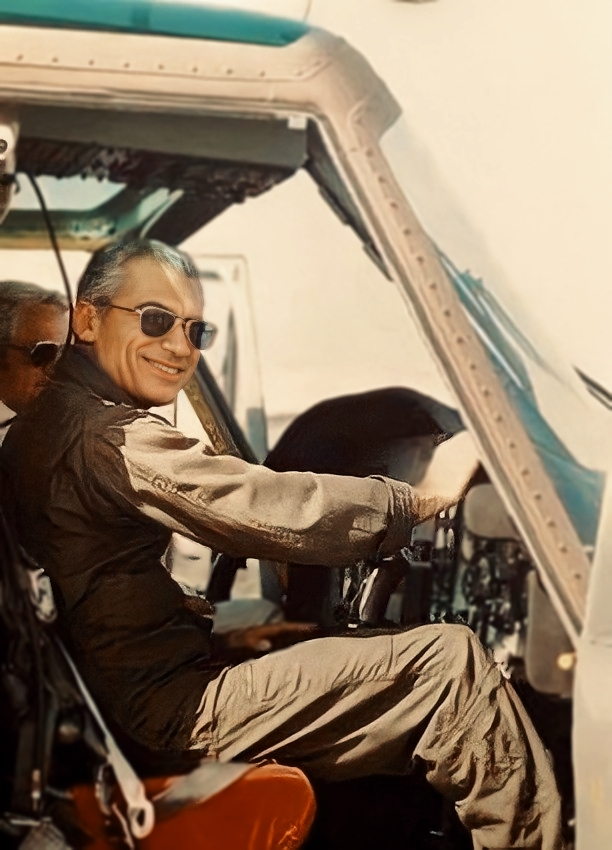

The Bell 214A climbed to a height of 3,000 meters (9,842.52 feet) in 1 minute, 58 seconds; ¹ 6,000 meters (19,685.04 feet) in 5 minutes, 14 seconds; ² and 9,000 meters (29,527.56 feet) in 15 minutes, 5 seconds; ³ The helicopter reached a peak altitude of 9,071 meters (29,760.5 feet), setting a record for altitude without payload.⁴ It was able to maintain an altitude of 9,010 meters (29,560.4 feet) in horizontal flight.⁵
All five of these records remain current.
Major General Manucheher Khosrowdad was murdered by Islamic revolutionaries at 23:30, 15 February 1979. He and three other Iranian military officers were the first to be killed following the revolution. A “tribunal” found him guilty of “corruption on Earth.” His prized German Shepherd Dogs were also slaughtered. His remains were then displayed in public. Eventually, his body was interred at Behesht-e Zahra Cemetery, Tehran.
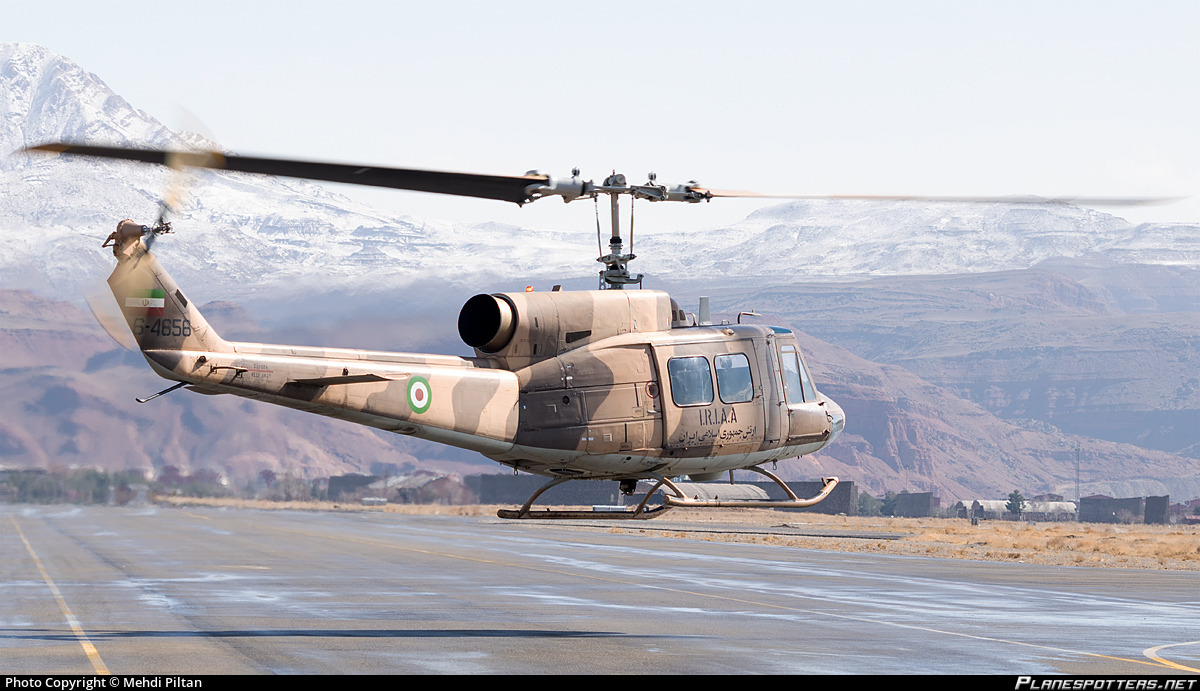
![]() The Bell 214A was developed from the prototype Bell 214 Huey Plus (which first flew in October 1970 and was powered by a 1,900-shaft horsepower Lycoming T53-L-702 turboshaft engine) for Imperial Iranian Army Aviation. Bell built three prototype 214As, powered by the Lycoming T55-L7C (2,050 shaft horsepower). One of these was shipped to Iran in August 1972 for evaluation.
The Bell 214A was developed from the prototype Bell 214 Huey Plus (which first flew in October 1970 and was powered by a 1,900-shaft horsepower Lycoming T53-L-702 turboshaft engine) for Imperial Iranian Army Aviation. Bell built three prototype 214As, powered by the Lycoming T55-L7C (2,050 shaft horsepower). One of these was shipped to Iran in August 1972 for evaluation.
The helicopter is flown by a pilot and co-pilot. It can carry 15 combat troops.
The production 214A was powered by the Lycoming LTC4B-8D turboshaft, rated at 2,930 shaft horsepower.
Iran ordered 287 Bell 214As. Iran named the Bell 214, “Isfahan,” after a city in Iran where it was planned to build a Bell helicopter production facility to produce additional 214A/Cs, and as many as 350 of the stretched, twin-engine Bell 214STs.
The first production BH 214A, 6-4561 (Bell serial number 27004), was built in Texas and delivered in Iran on 26 April 1975.
Because of the Iranian revolution of 1978–1979, the Isfahan facility was never built. All of the BH 214A/Cs and BH 214STs for Iran were built in Texas: 287 214As, 39 214C search and rescue variants, and 48 214STs. Sanctions against the Iran regime have prevented any spare parts for these helicopters being delivered to Iran, but it is believed that that country has produced counterfeit parts. It is not known how many of these helicopters remain in service, but a 2018 estimate suggested just 22.
The Bell 214A was built using a strengthened UH-1H airframe. It had a semi-rigid rotor system without the stabilizer bar of previous UH-1 models. The 214A’s rotor system included elastomeric bearings.
The fuselage is 44 feet, 1.09 inches (13.4389 meters) long. The helicopter has a maximum height of 12 feet, 10 inches (3.9116 meters). With blades turning, its maximum length is 60 feet, 2.27 inches (18.3457 meters). The 214A’s main rotor diameter is 50 feet, 0 inches (15.24 meters). The main rotor blades have a chord of approximately 3 feet (0.9 meters). As with all American helicopters, the main rotor turns counter-clockwise when viewed from above. (The advancing blade is on the right.) The tail rotor is mounted on the right side of the vertical pylon, and turns clockwise as viewed from the left side of the helicopter. (The advancing blade is below the axis of rotation.) It has a diameter of 9 feet, 8.00 inches (2.9464 meters). The tail rotor blades have a chord of 12.00 inches (0.3048 meters).
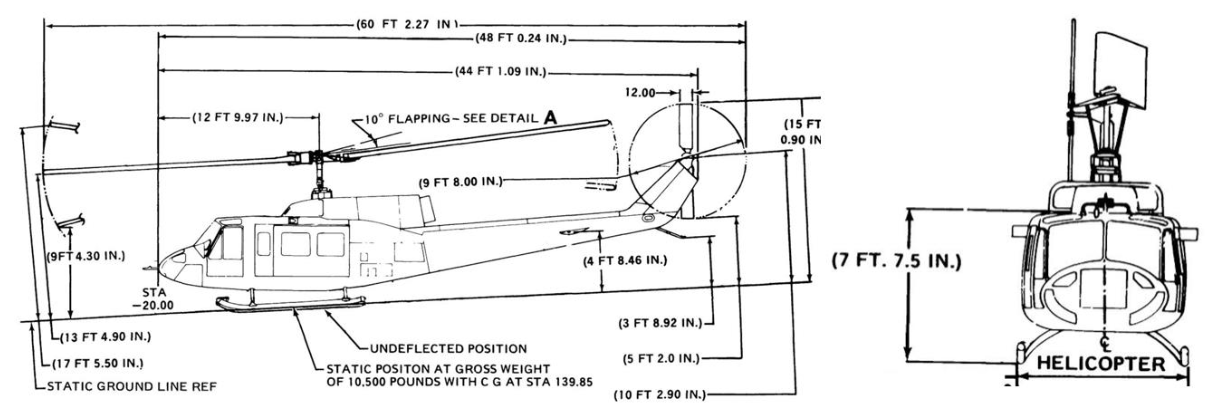
The Lycoming LTC4B-8D (an uprated version of the T55-L-7) is a turboshaft engine with a 7-stage axial-flow, single-stage centrifugal-flow compressor section, a reverse-flow combustor, two-stage high-pressure gas producer and two-stage free power turbine. It can produce 2,930 shaft horsepower, but is derated to 2,250 shaft horsepower. The engine is 3 feet, 9.5 inches (1.557 meters) long, 2 feet, 1.1 inches (0.63754 meters) in diameter, and weighs 618 pounds (280 kilograms).
The Bell 214A has an empty weight of 7,588 pounds (3,441.9 kilograms) and gross weight of 13,800 pounds (6,259.6 kilograms). It can carry up to 7,500 pounds of cargo suspended from its cargo hook, in which case its maximum gross weight is 16,000 pounds (7,257.5 kilograms).
The Bell 214A has a maximum speed of 140 knots (161.1 miles per hour/259.3 kilometers per hour). Its range is 222 nautical miles (255 statute miles/411 kilometers). Its service ceiling of 16,400 feet (4,998.7 meters).

Bell went on to produce a commercial variant of the BH 214A, which it designated the Bell 214B BigLifter. This model received a FAA Type Certificate 27 January 1976. On 3 February 1976, a second model, the BH 214B-1, was also certified. The BH 214B-1 has a lower gross weight than the 214B, but the only actual difference between the two models is the aircraft data plate and the flight manual. This was done due to certification standards of various countries which would place the 214B in a “large helicopter” classification. Only 70 of these commercial models were built.
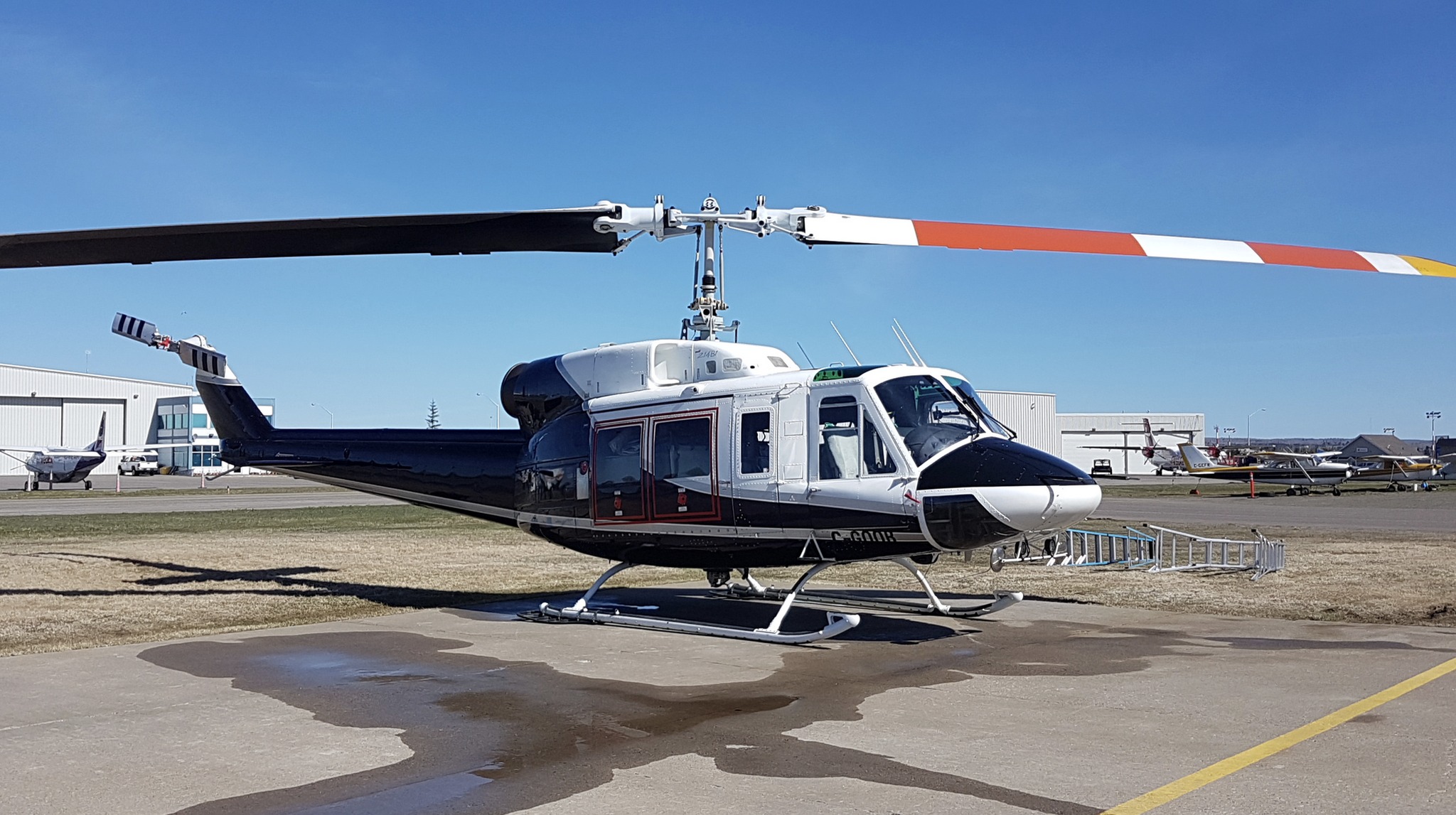
Another commercial BH214 variant was also produced, the 214ST. Initially called the “Stretched Twin,” this helicopter featured two turboshaft engines, a 2 foot, 6 inch (0.762 meters) increase in length, and a larger diameter main rotor system. This helicopter was also intended to serve with Iranian Army Aviation, and 350 were to be built at the Isfahan facility.
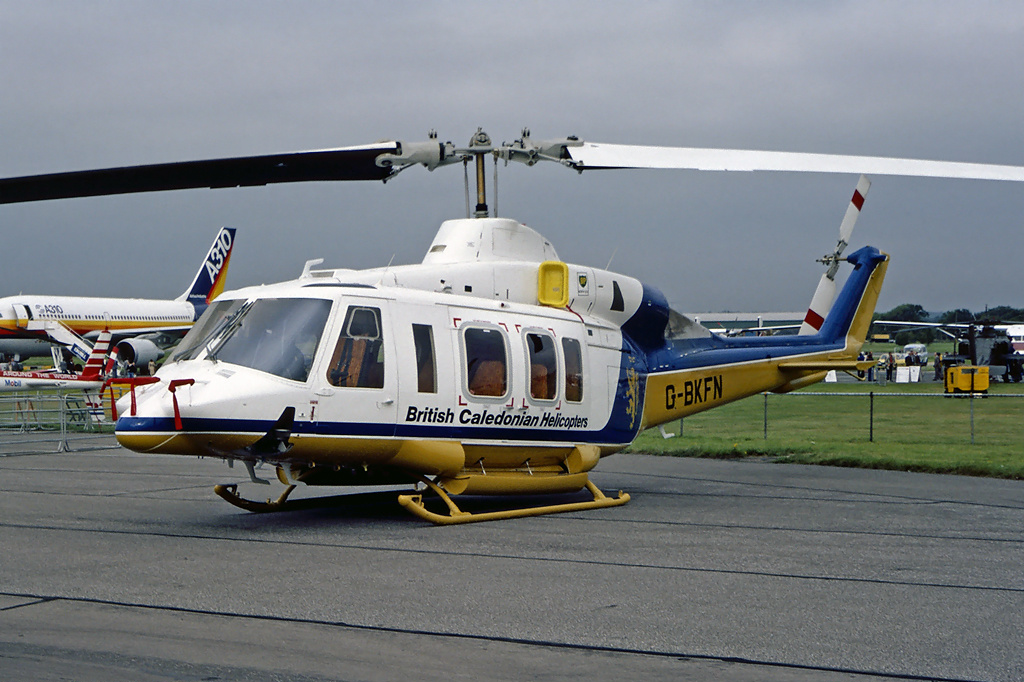
Marketed as the 214ST SuperTransport, this helicopter could be ordered with either fixed skids or fixed tricycle landing gear. A total of just 96 were built, with 48 for Iran. The others were for commercial customers, or the militaries of several countries.
Bell Helicopter transferred FAA Type Certificates for the Model 214B, 214B-1, and 214ST helicopters to Erickson Incorporated, Central Point, Oregon, in 2020.
¹ FAI Record File Number 1850
² FAI Record File Number 1849
³ FAI Record File Number 1848
⁴ FAI Record File Number 1879
⁵ FAI Record File Number 9935
© 2024, Bryan R. Swopes
